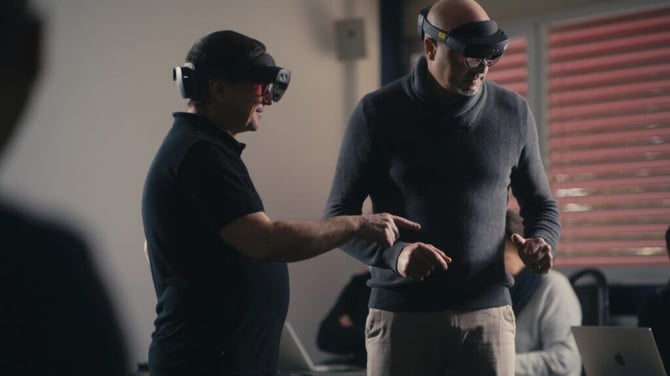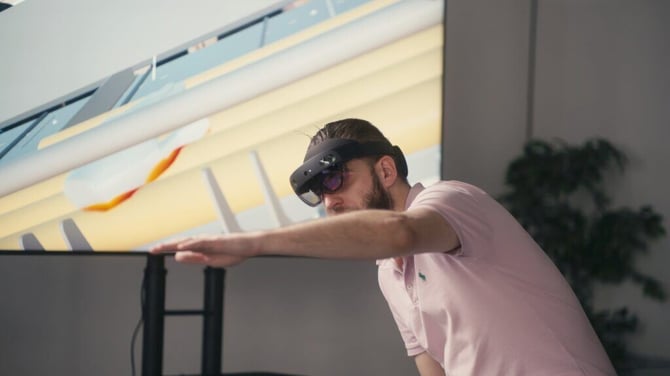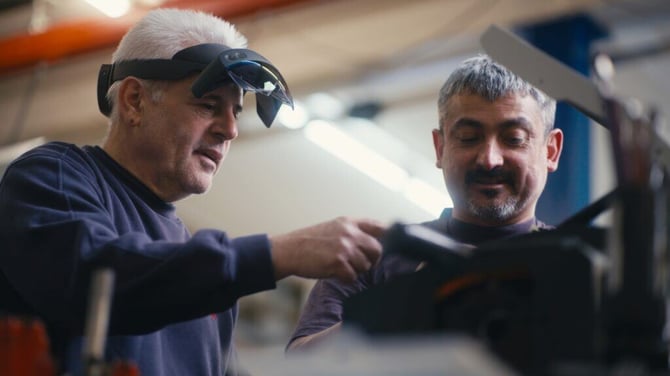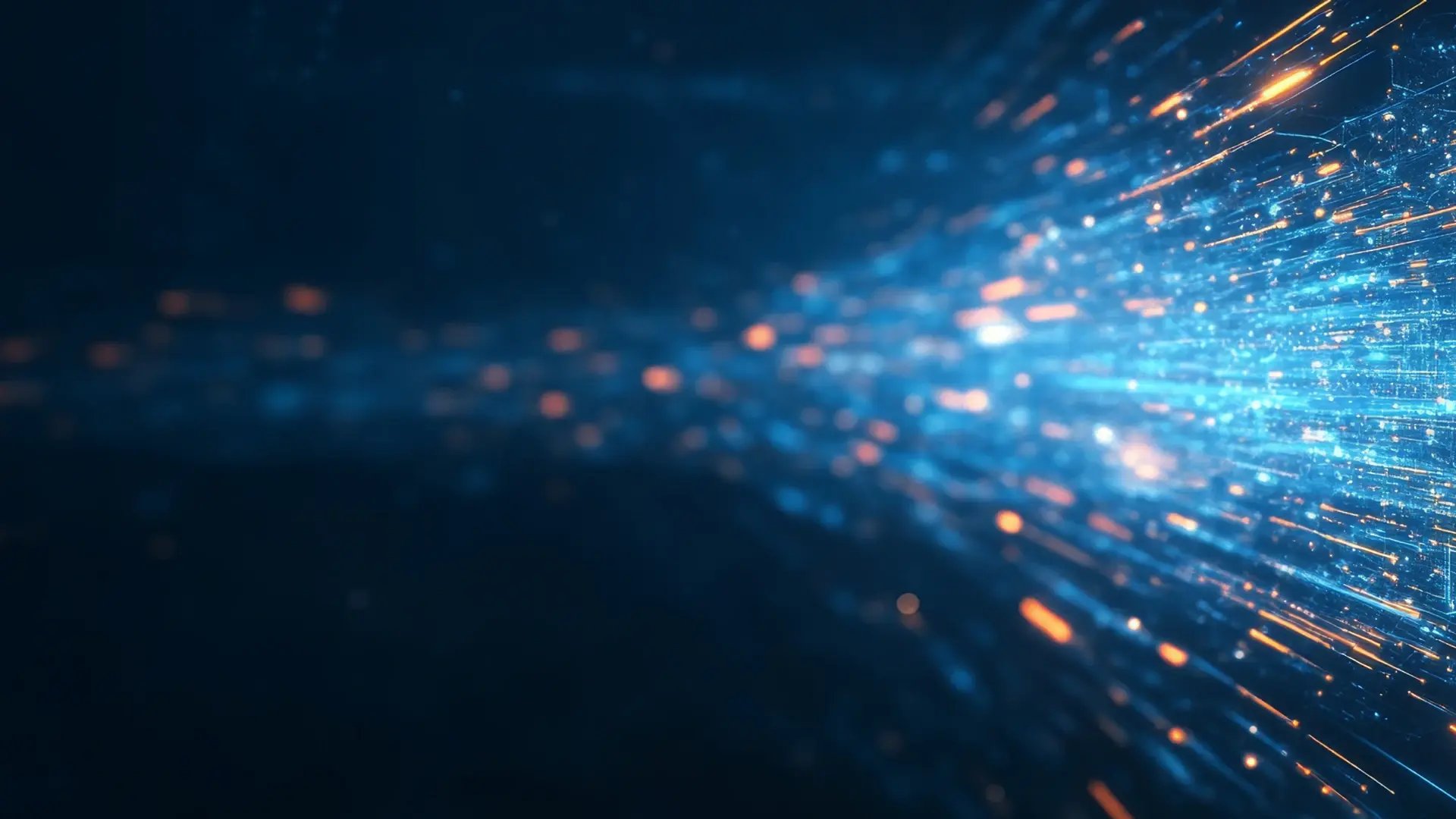Hololight Stream Runtime - XR Streaming out of the box
Until now, streaming XR experiences has largely been the domain of developers - requiring SDK integrations, system configurations, and a fair bit of...
Table of Contents
LNS Group, a Swiss leader in machine tool peripherals, is driving immersive technologies throughout its product development cycle. From early design reviews with global stakeholders to risk assessment and handover to operations, the company is reducing time-to-market by 3 months and saving $5,000 to $10,000 per prototype while improving product quality.
Four different product lines, nine production sites in Switzerland, Italy, the UK, Taiwan, China, Japan, and the USA, and around 1,000 dedicated professionals around the world. LNS Group is a global Swiss machine tool peripherals specialist that prides itself on its R&D focus and global presence. “The way we communicate is key to the success of the product,” emphasizes Jamie Towers, CTO of LNS. “You can’t really quantify it, but the most important thing in product development is to get buy-in from all the stakeholders and have everyone understand and agree on what we’re trying to accomplish as early as possible.”
Easier said than done. The CTO and his innovation team recognized early on the need to integrate industrial augmented and virtual Reality (AR/VR) into their research and development processes to foster better communication and collaboration across global teams and departments. “We chose the XR Engineering solution, Hololight Space, because it met our vision for adaptability and ease of use right from the start. We upload our designs to the cloud platform and simply start a collaborative meeting. In our industry, complexity often leads to resistance, but the solution’s straightforward functionality means our team can focus on pushing the boundaries of innovation without the frustration of dealing with cumbersome systems.”
LNS specializes in bar feeders, chip conveyors, air filtration and coolant management systems that are integral to the automotive, watch, medical and aerospace industries. The way the company develops products is no different than many others. They review market requirements, go through the development process, and return to market implementation as they move through each of these phases. “We’re 100% committed to delivering customer-focused products,” says Towers. “The only way to do that is to really work with the customer and the people who face the customer. That’s your sales team, that’s your customer service team. And those are the hardest people to engage when it comes to design reviews,” he adds with a smile.
Non-design teams often struggle with the challenge of visualizing products from onscreen models alone. The difficulty of assessing scale, accessibility, and maintenance considerations from a 3D model on a 2D screen can create a gap in understanding the product in tangible terms, making it difficult to provide the concrete feedback engineers need to better tailor the product to customer needs. This gap often requires the creation and global distribution of multiple prototype versions, at significant financial and environmental cost. Hololight Space now provides a dynamic digital workspace for seamless interaction with 3D CAD data in both AR and VR environments. Users can visualize and work with their own 3D content to review designs, plan a factory layout, perform quality assurance, or verify assembly processes. Data is streamed from powerful on-premises or cloud servers with Nvidia GRID GPUs to ensure high levels of security and high-quality visualization without the need for data optimization.
Using Hololight Space in the design process heralds a transformative shift. Teams can visualize products in real-world contexts, facilitating more accurate and comprehensive early-stage reviews. Tangible interaction with a product before it is physically created leads to the development of more accurate initial prototypes, significantly shortening the iterative cycle of prototyping. “Visualizing our designs in AR and the real world helps us get valuable feedback from our sales and customer service teams on what might need to be tweaked to better meet customer needs. It also works very well with our customer service teams, such as checking the accessibility on the digital twin to see how we can service a particular product,” explains Brian Scruggs, Global Engineering Administrator at LNS. “We typically use Hololight Space to highlight key features that we need specific feedback on, and then everyone can look at the design together, we take notes, and we also use the live stream so everyone can follow along.”

Incorporating AR into the design review process not only streamlines communication, but also fosters greater buy-in from all stakeholders. “We are able to get products from the drawing board to market in a short period of time – from large developments with many stakeholders to smaller projects with small groups,” notes Scruggs. By removing the barriers to visualization, AR reduces the number of prototypes needed, thereby lowering costs and minimizing environmental impact. In addition, effective design reviews cultivate company-wide support, reducing the frustration often associated with late-stage design changes. “The ease of use is a critical point, having the backup and support behind it is also a key, and frankly the price point is right for what we need. For us, using Hololight Space is now like turning on a computer. It is second nature to us,” concludes Scruggs.
Leveraging its global R&D network, LNS typically designs in one region and manufactures in another. CE compliance, which the company manages from Switzerland with the help of external consultants, is an important step in the product development process, often performed with a risk assessment near the end of the prototyping phase. “Changes – and there are almost always changes – can have a profound impact on the design, cost and overall concept of the product. As a result, compliance assessments introduced later in the process can add significant time to the schedule,” states Jamie Towers, CTO of LNS. “We were looking for a way to do risk assessment earlier in the design process, before we even built a prototype, not only internally but also with our external consultants.”

Global Engineering Administrator Brian Scruggs elaborates, “To give an example, we had a project in China with a large machine tool manufacturer where the product would end up in Europe and instead of shipping a product to Switzerland, we decided to use Hololight Space to do a remote risk assessment with our external consultant. We did the risk assessment in Augmented Reality, discovered some changes that needed to be made, and were able to fix the mistakes before we ever built and shipped a product to Europe.” By avoiding shipping, travel, and building a prototype, LNS was able to save $5,000 to $10,000, while significantly reducing the environmental costs associated with building multiple prototype iterations. “We saved at least three months of project time by conducting early risk assessments and avoiding the need for later “patches” to the design,” reports Scruggs. “The result is not only a reduction in time and cost, but also a product that truly meets the practical considerations of the user.”
Finally, “handover to operations” is a pivotal moment. It’s the critical transition where all the plans, prototypes, and theoretical work are handed over to the teams that will implement them in the real world. Early involvement of the operations team is a good starting point for a successful handover. But trying to understand complex operations from afar often leads to early production problems, and the travel costs of sending experts to different production sites can be significant. In addition, internal frustration can result from a lack of understanding and cooperation during this crucial transition period, leading to delays and low morale. “I think it’s important to understand that there is usually some form of compromise when design changes are introduced late in the process,” says Scruggs.

He adds: “For us, it’s about improving quality down to every sub-assembly. With Hololight Space, our operations teams in different regions can see in Augmented Reality how each assembly is created in real time. They can see the critical points and we can identify where there may be mistakes or confusion; it’s a collaborative effort to get better quality from day one, using immersive technologies to our advantage.” By enabling better collaboration across sites and geographies, AR improves the quality and speed of production ramp-up, ensuring a smoother transition from design to operation. The ability to work remotely with AR technology, especially when multiple international locations are involved, greatly reduces travel-related costs and time. In an era where efficiency and communication are paramount, Hololight Space is proving to be a key tool in transforming the handover of operations into a seamless and streamlined process.
To successfully implement Augmented Reality into the product development process and get user buy-in, Jamie Towers says they still limit how much they ask the user to interact. “We usually have an AR-trained member in the room to help with the manipulations, and then we hand the glasses over to the user to just experience the design in AR. There are some people who are never fully comfortable until they actually have something in their hands. But overall, our people are definitely impressed with the technology. They see the value in the technology.”And the next project is just around the corner. “We’re investing in immersive technologies, and it’s natural to keep using them. This time we made a prototype with one configuration, and we’re going to use Hololight Space to show our customer a second, completely different configuration without having to produce a second prototype. Wherever we can find an advantage, we will use immersive technologies to optimize our product development lifecycle,” concludes Towers.
Want to try Hololight Space for yourself? Contact us for a free trial.

Until now, streaming XR experiences has largely been the domain of developers - requiring SDK integrations, system configurations, and a fair bit of...

The Fastest, Sharpest, Most Immersive XR Streaming Yet For over a decade, Hololight has been at the forefront of XR Pixel streaming innovation....